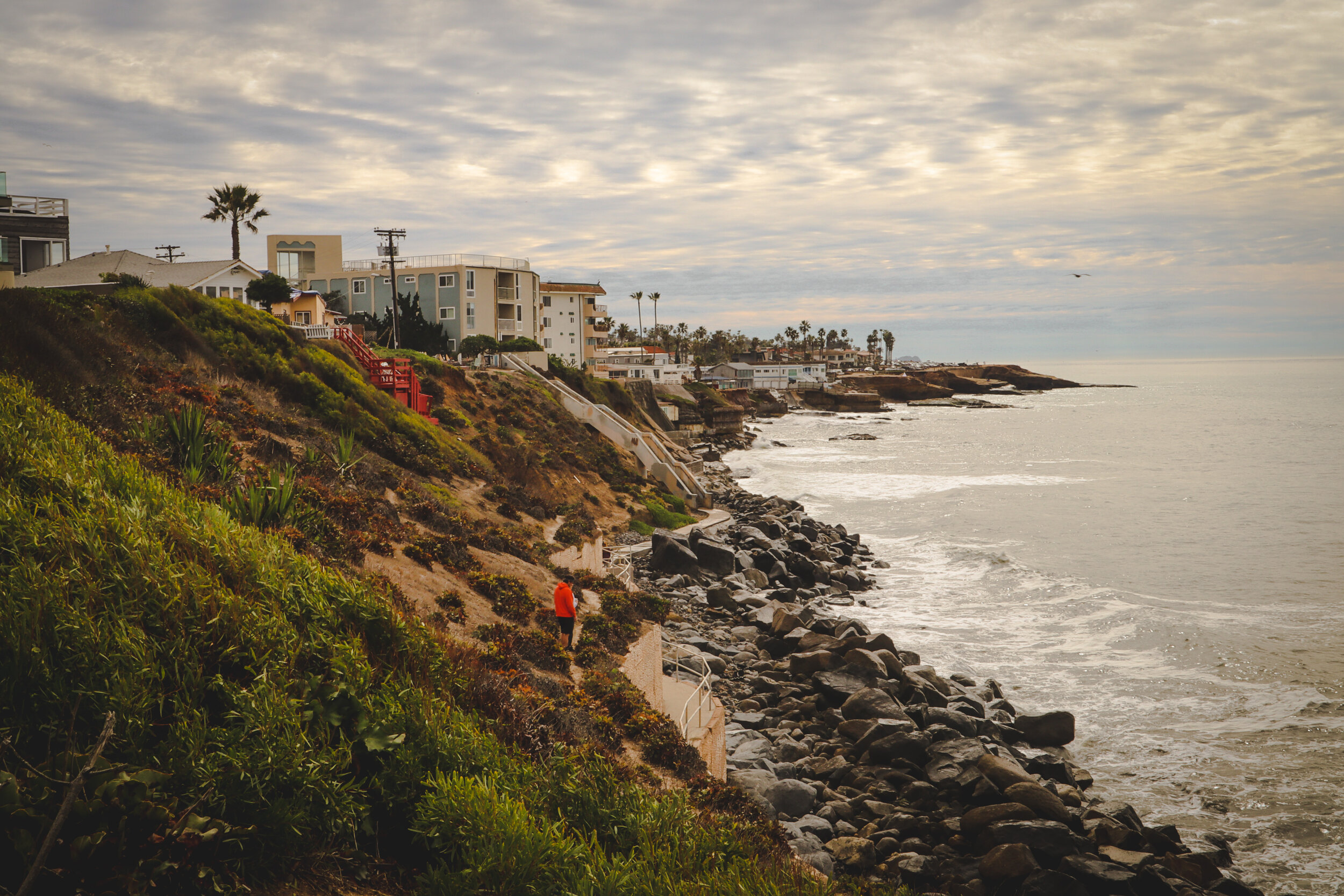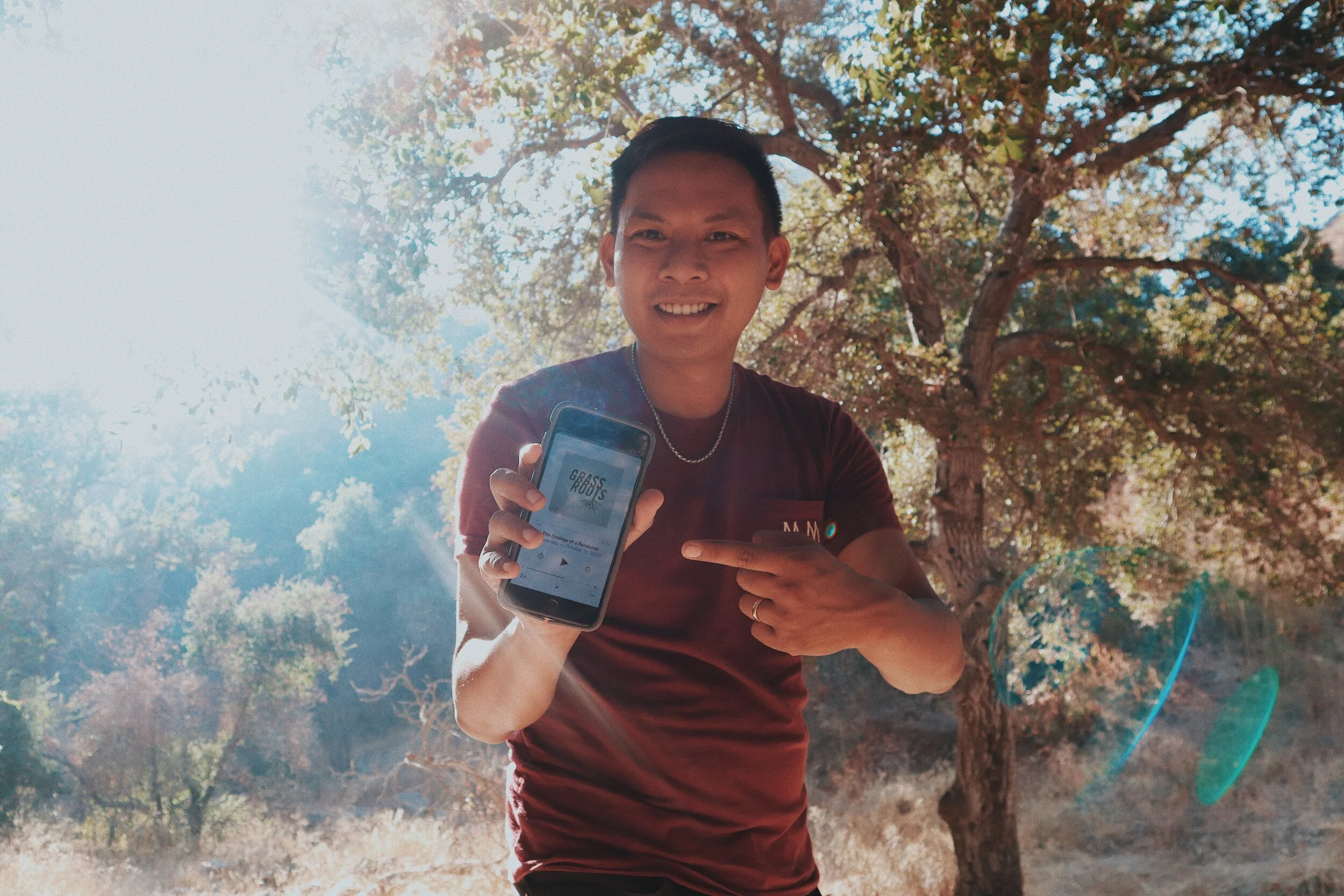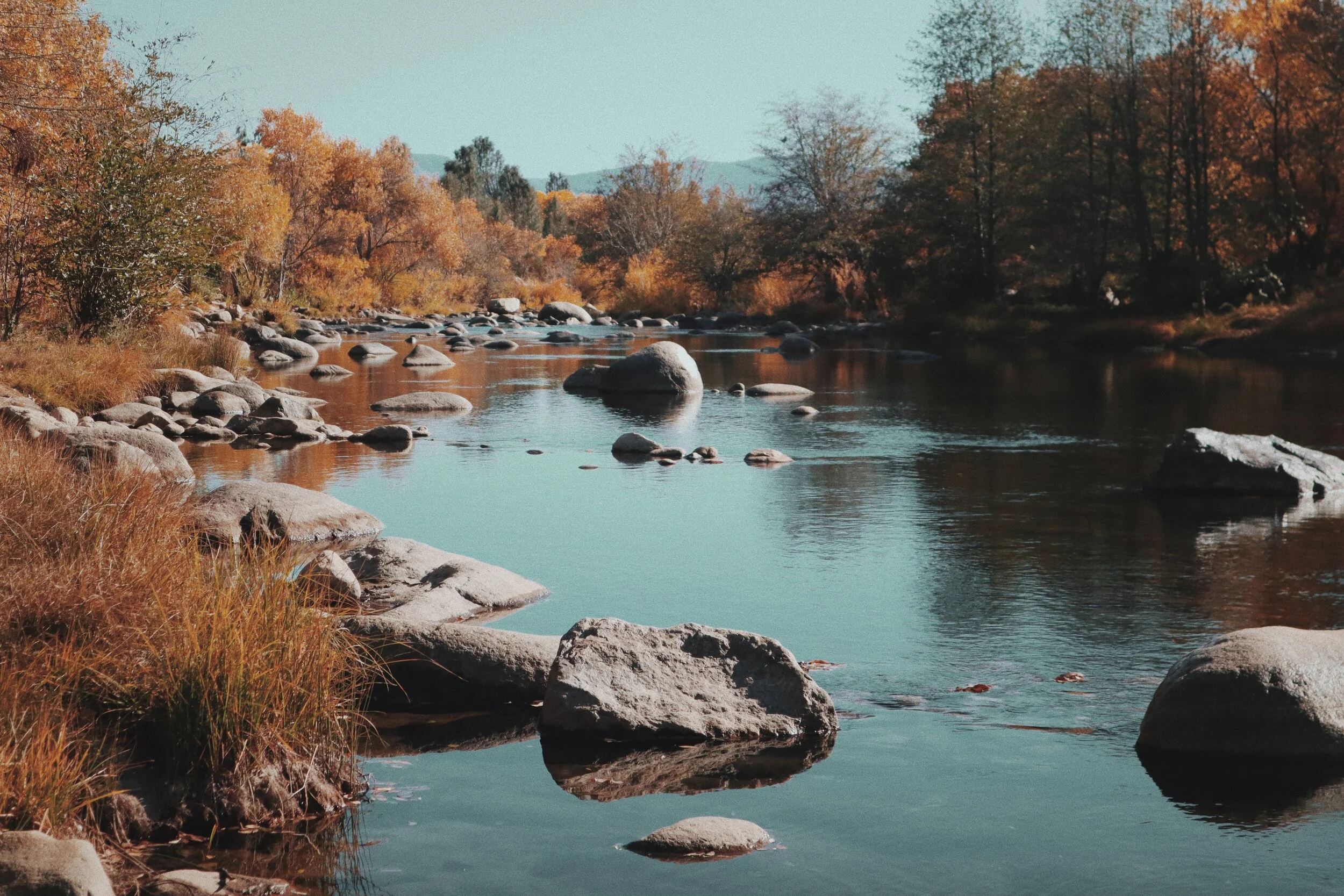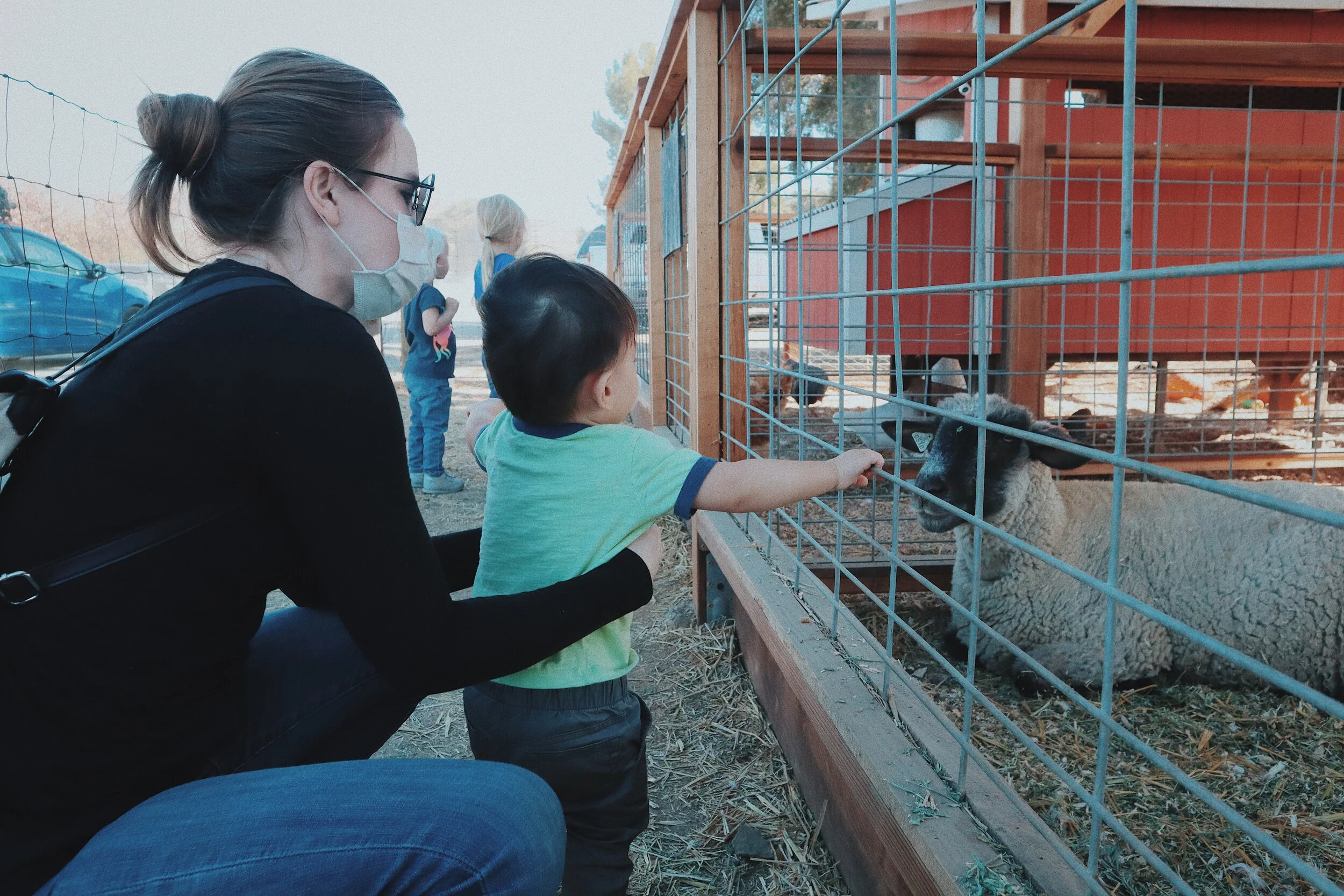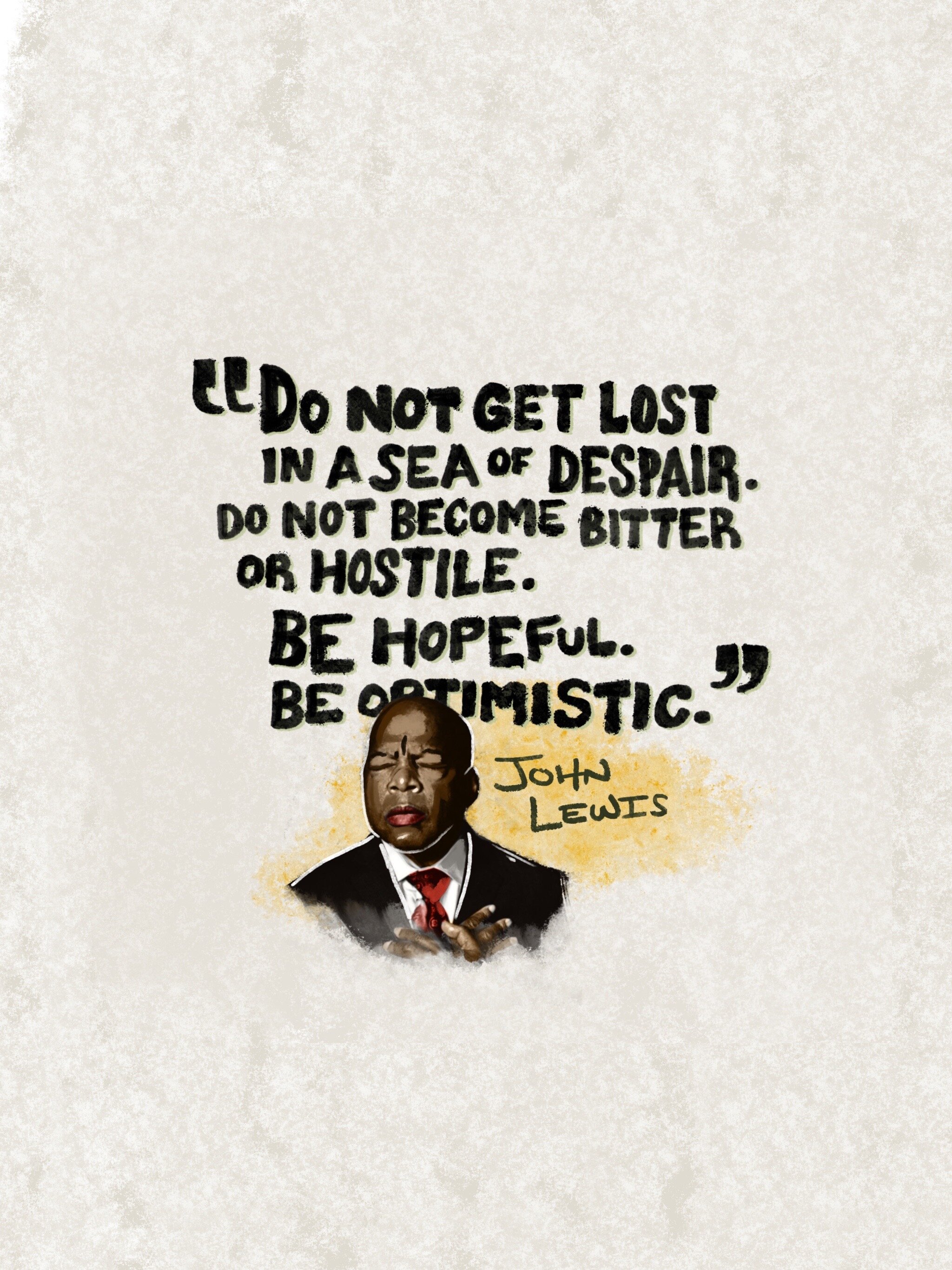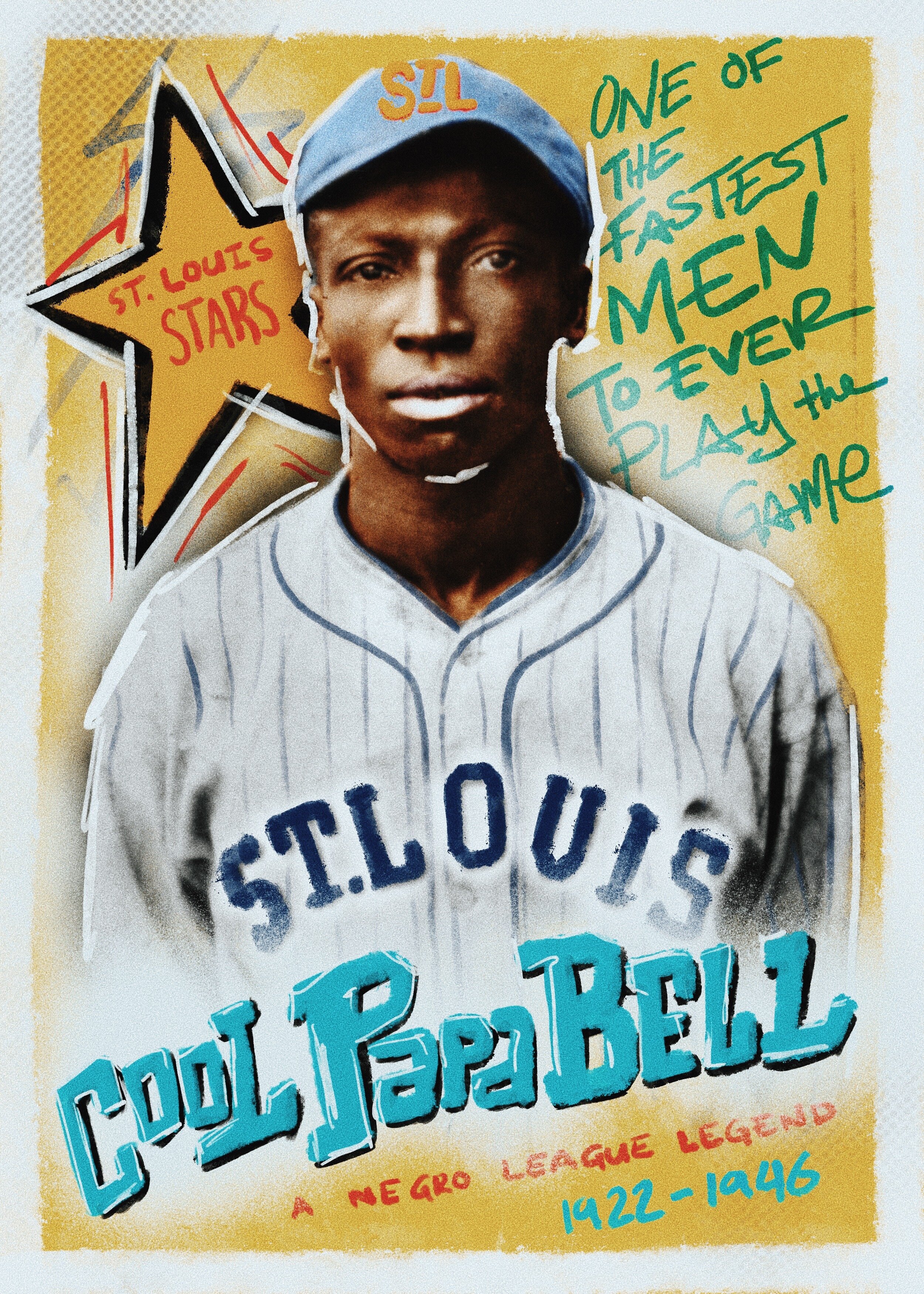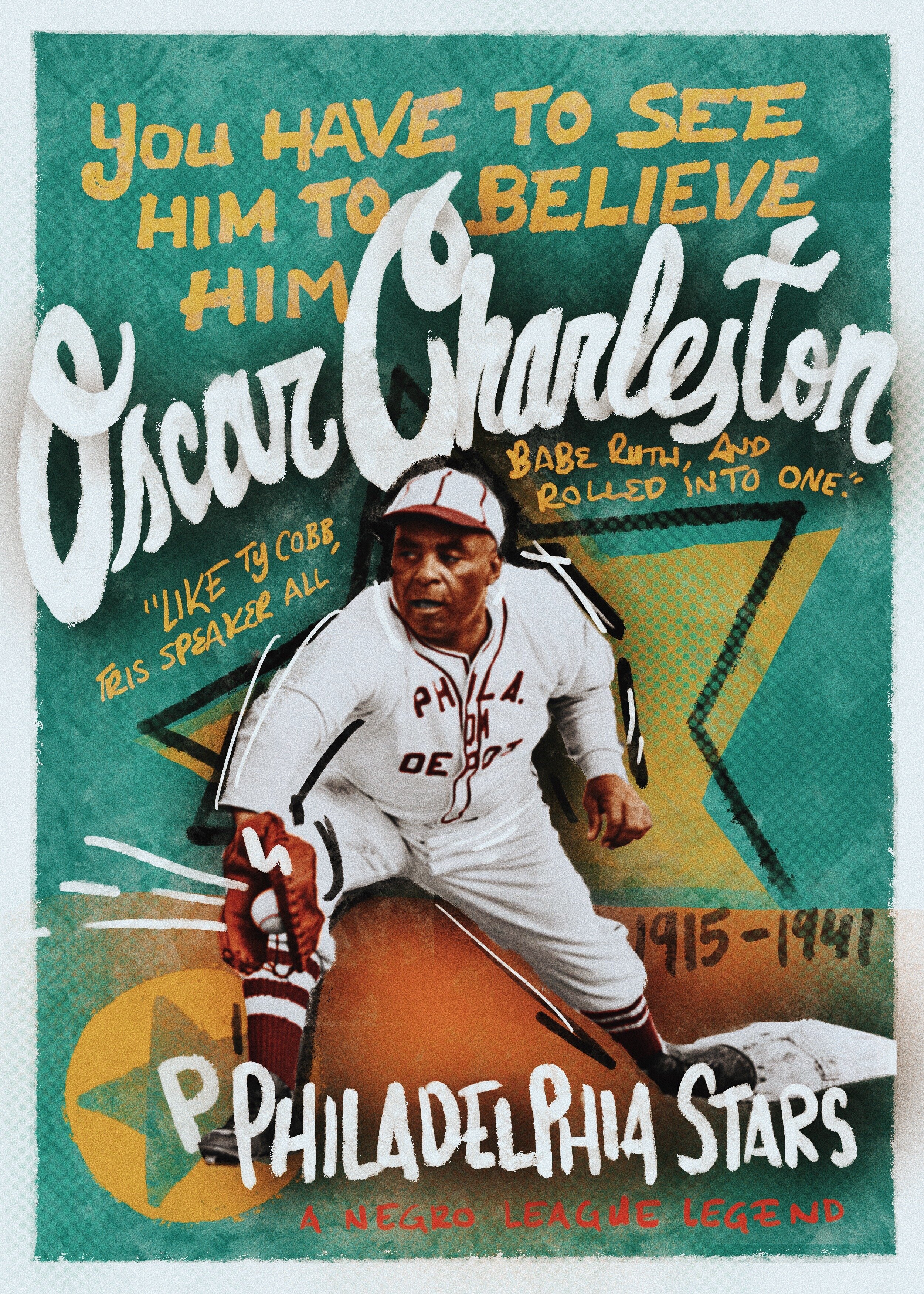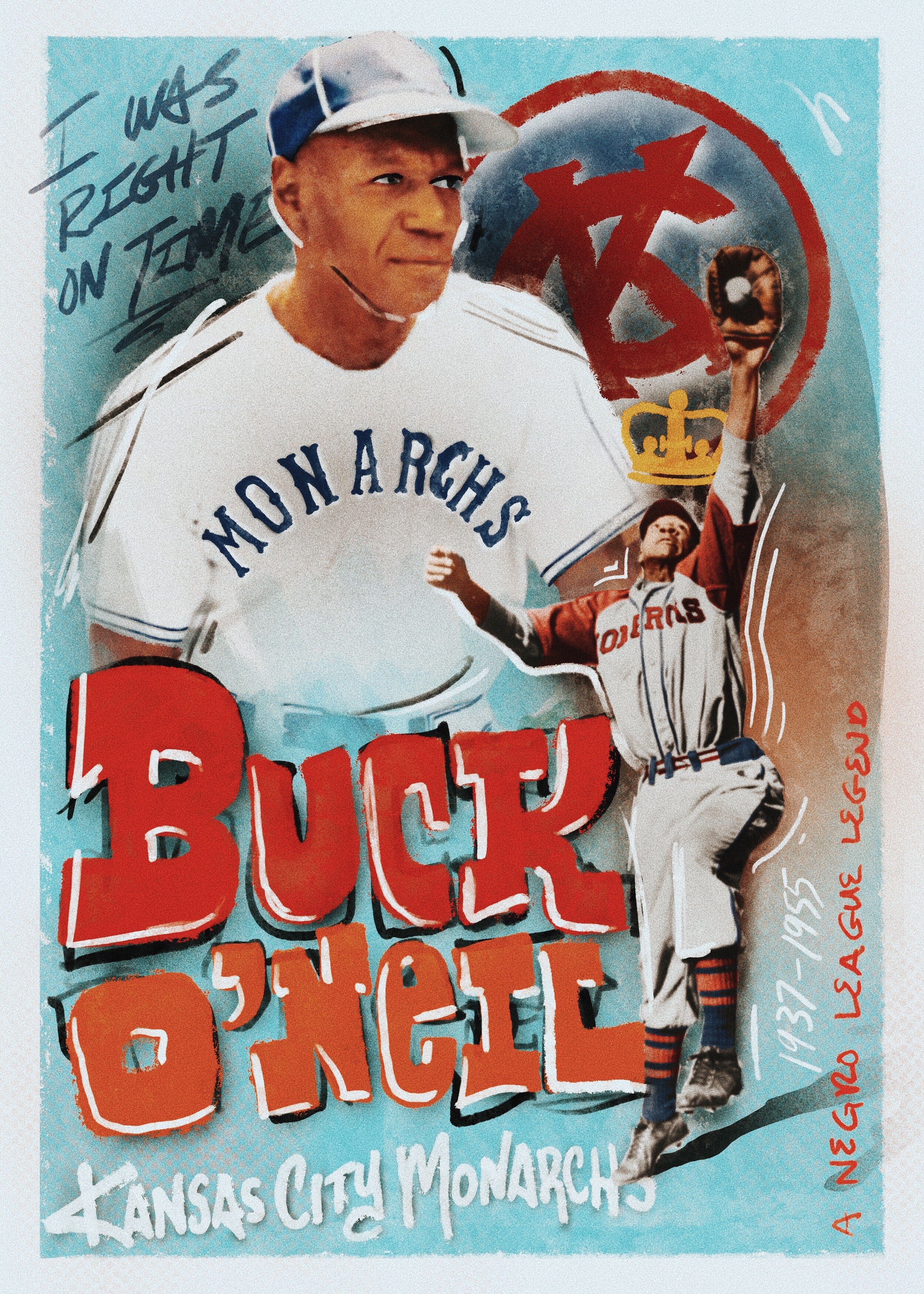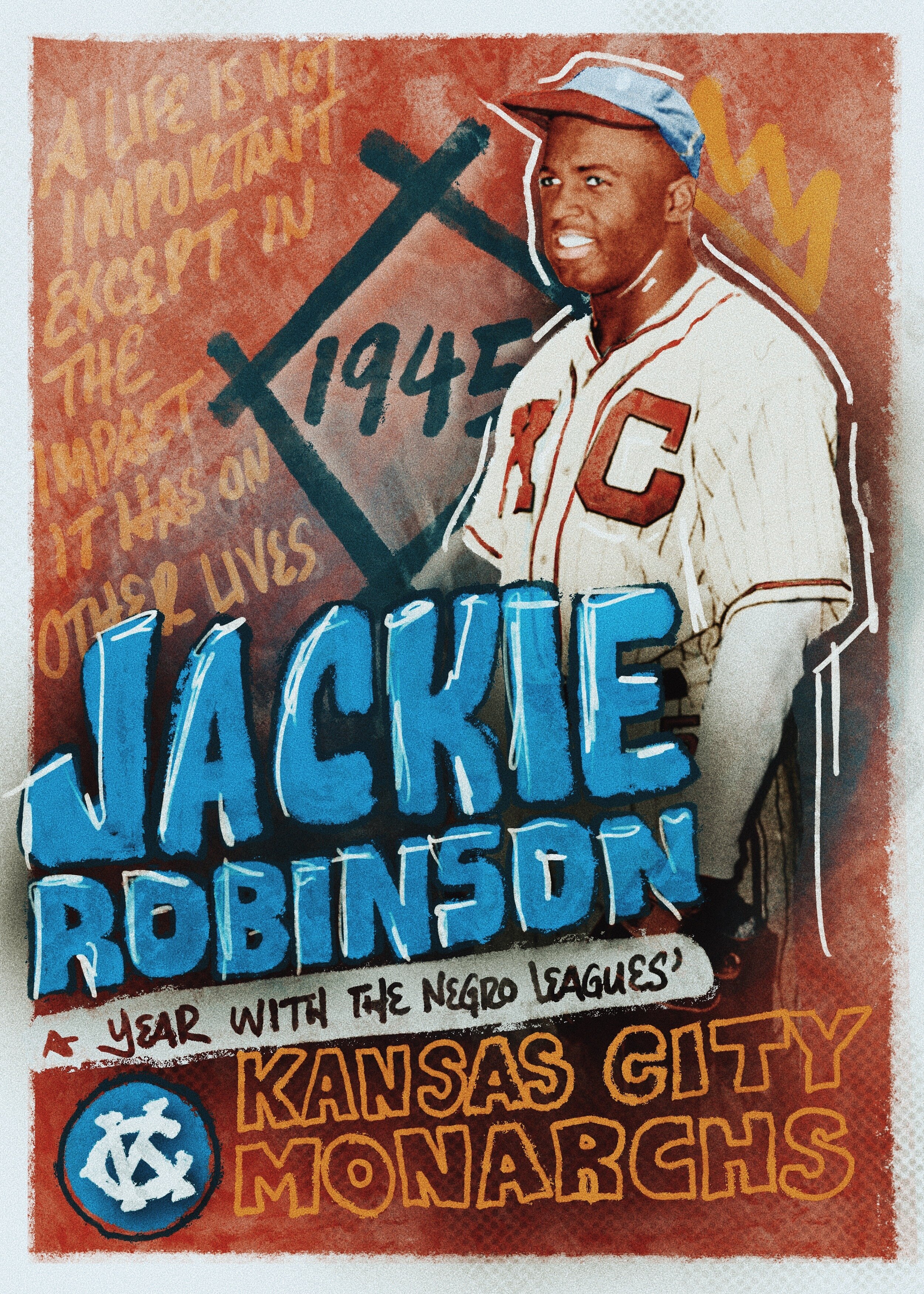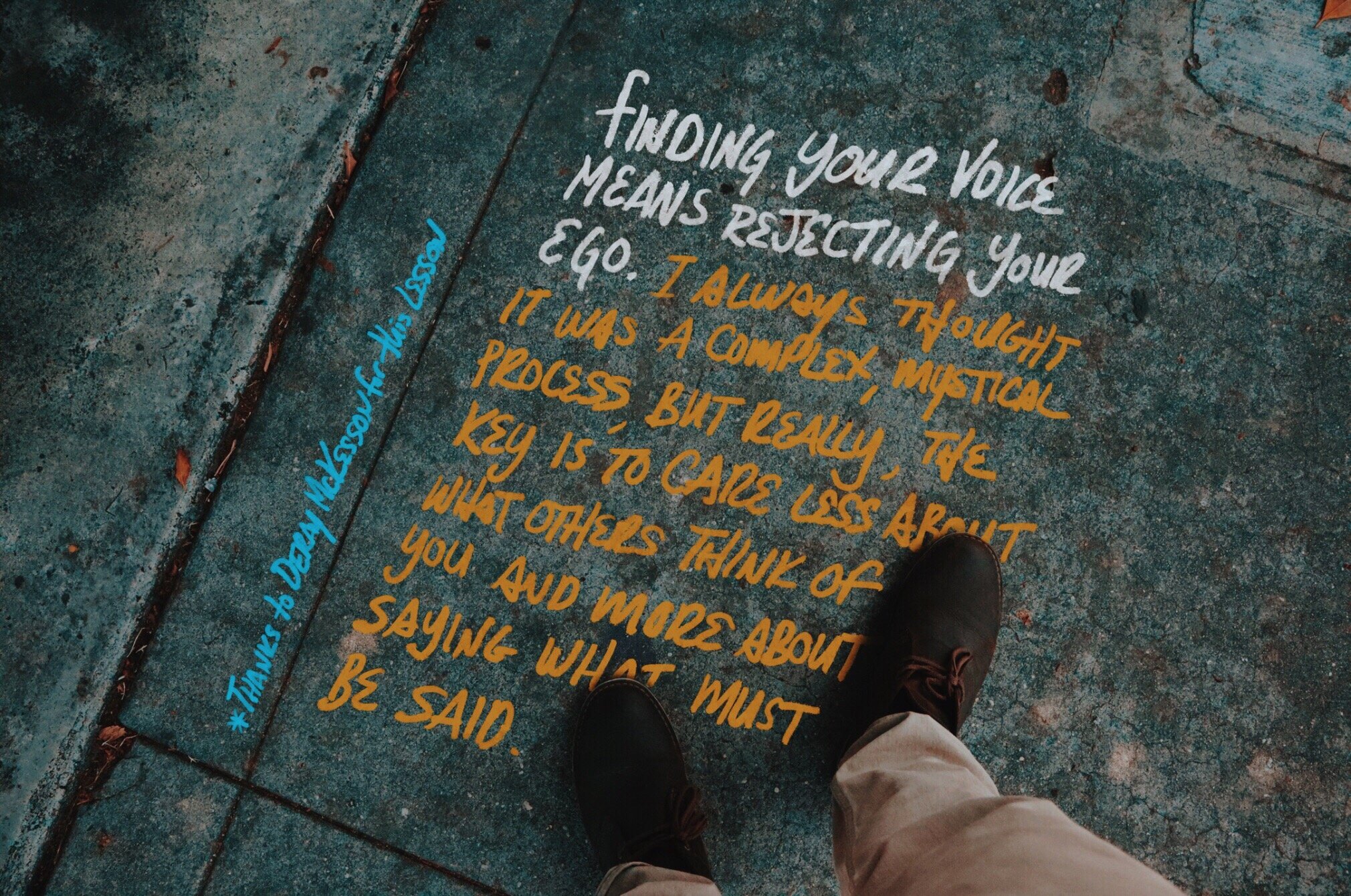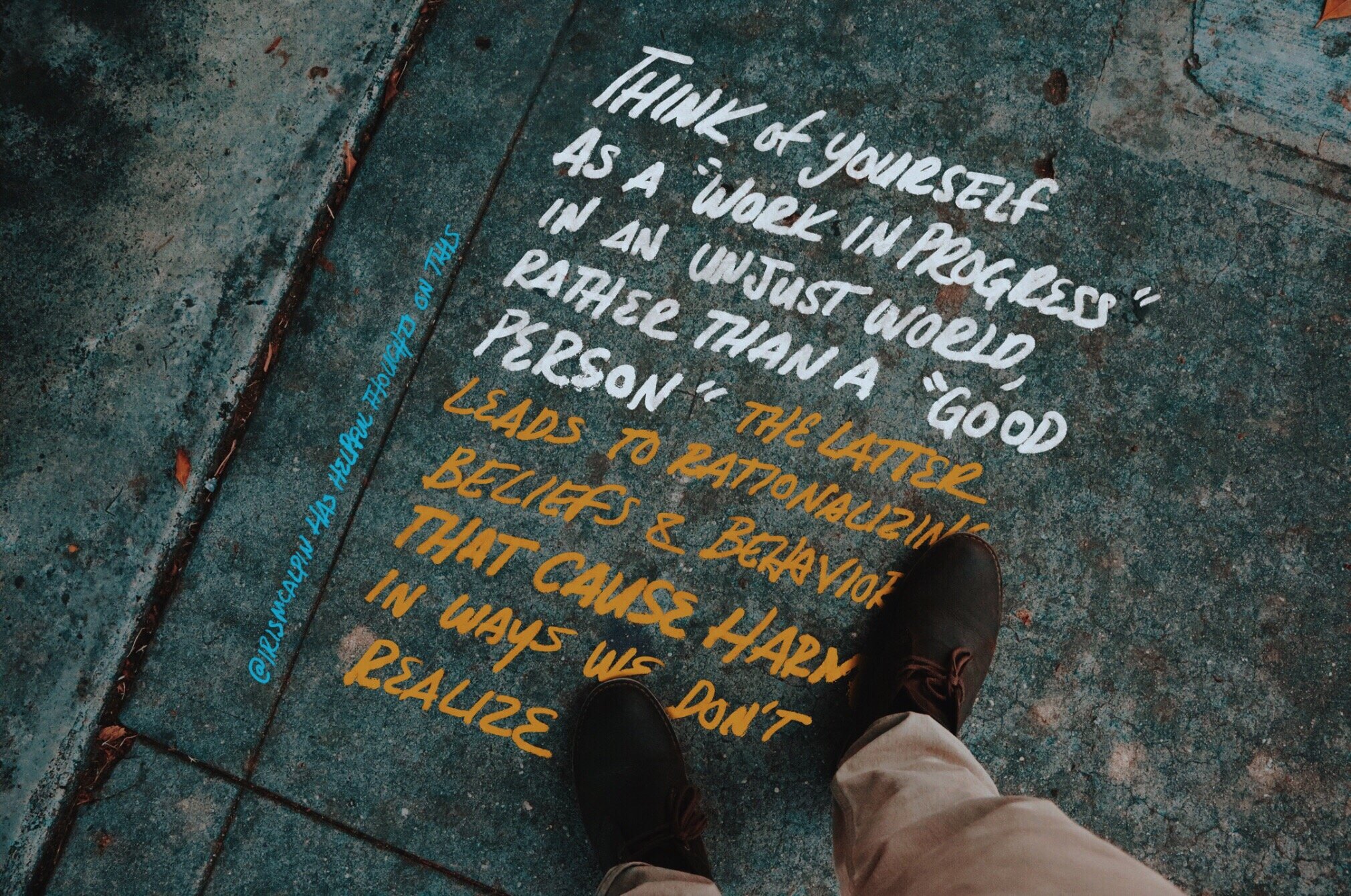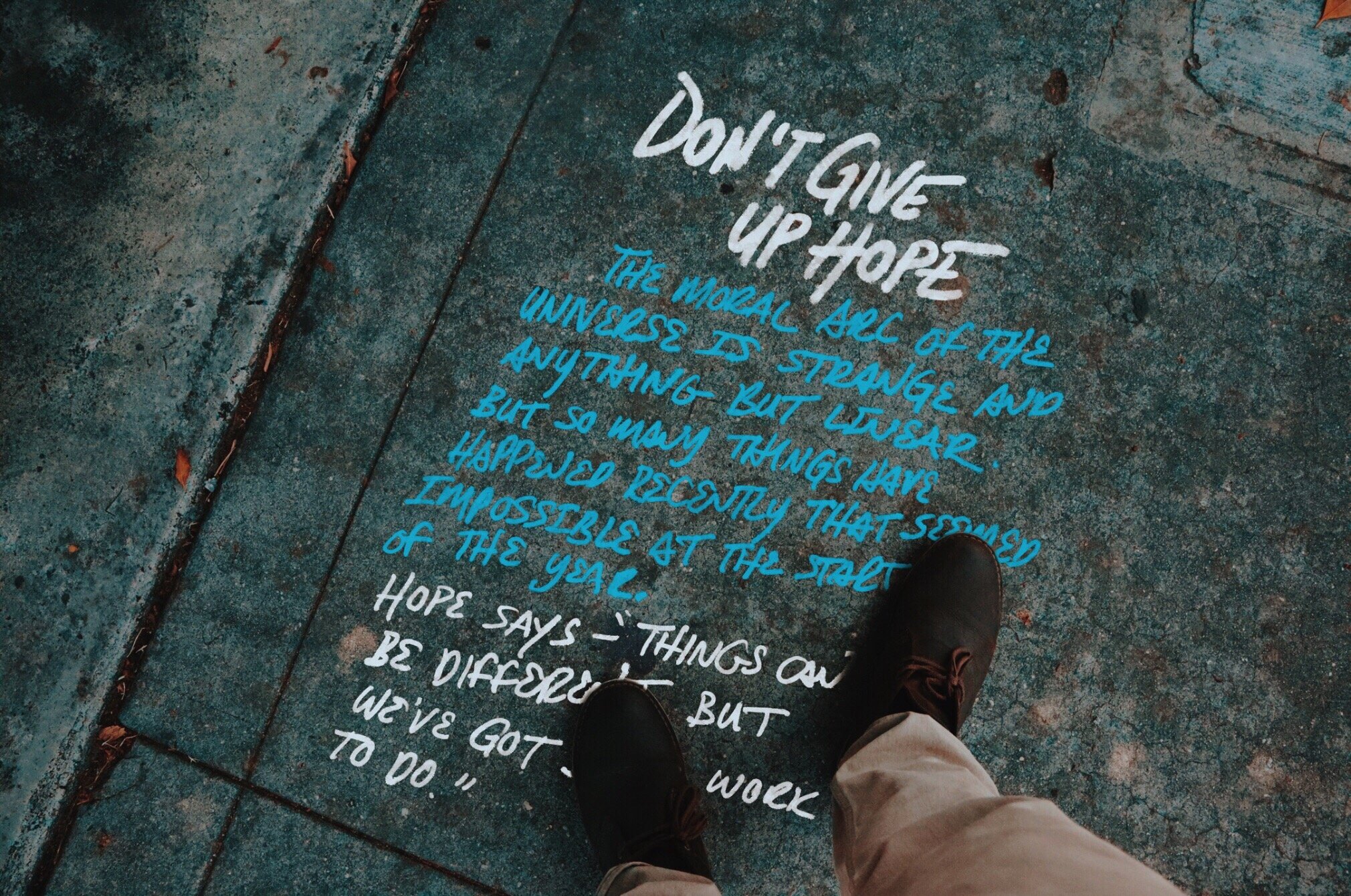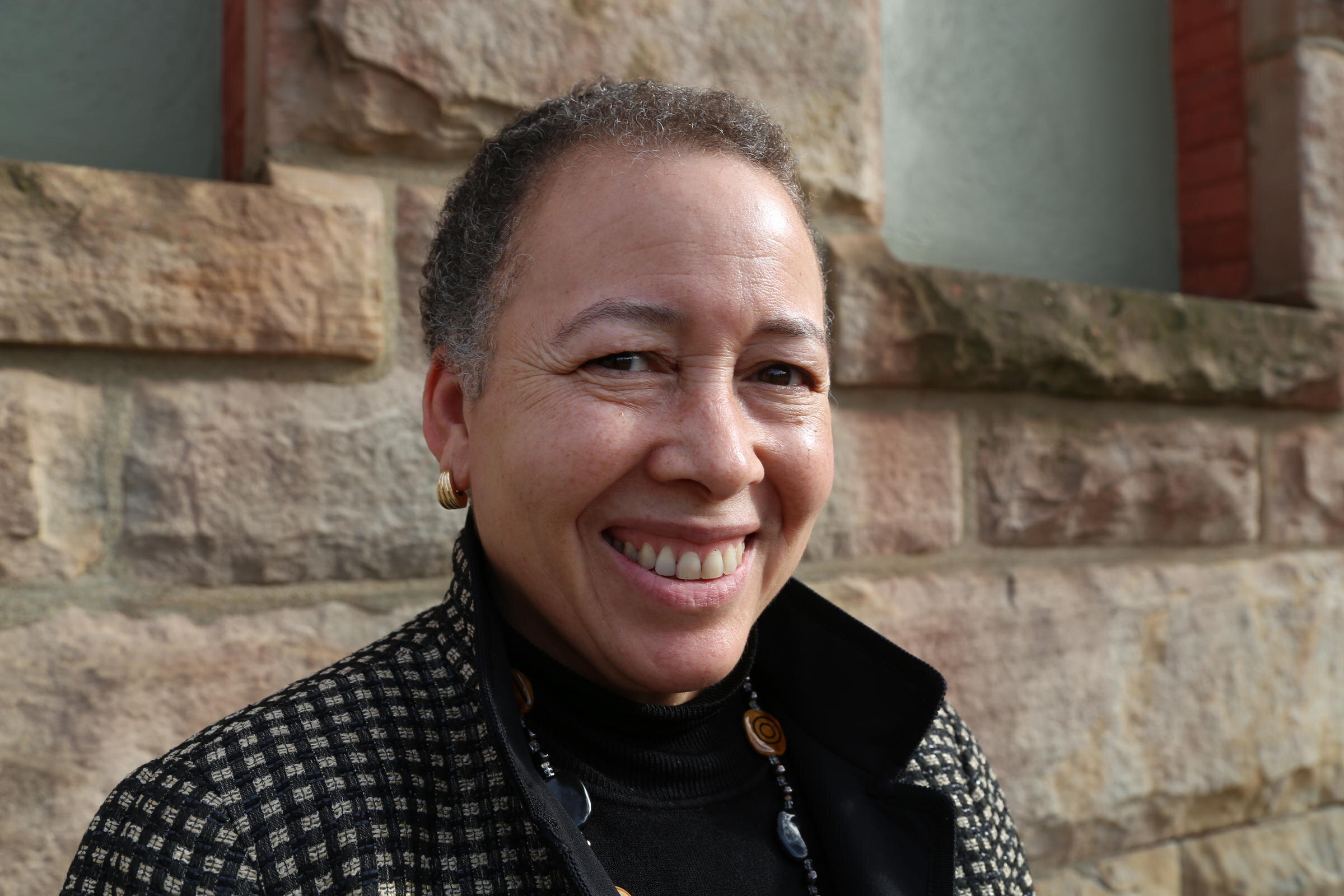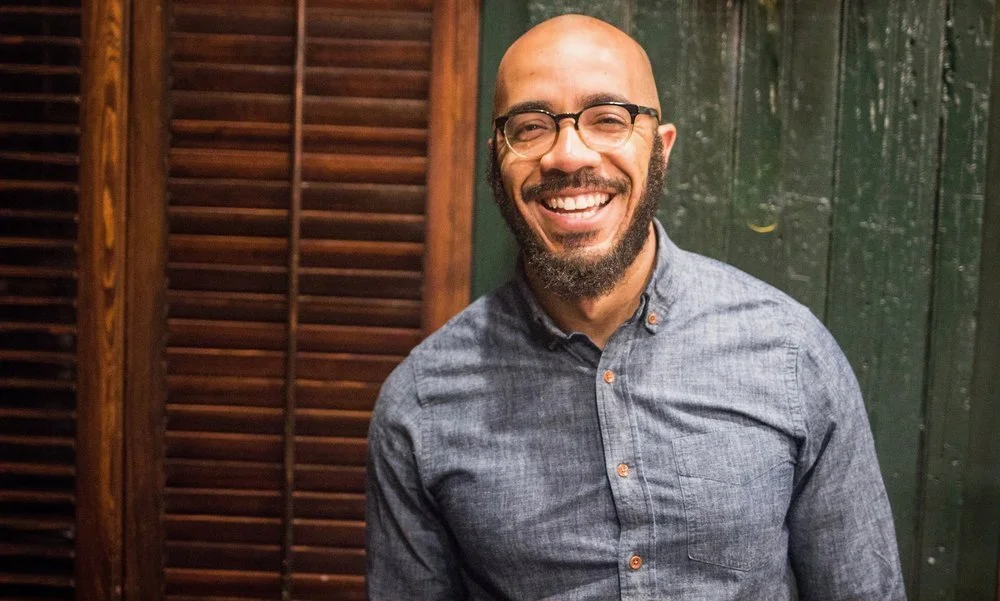Is recycling BS? ♻️ I’ve heard a few times that recycling just doesn’t do as much as we might think. Eventually I decided to look into it.
I learned...
♻️ ...that just two years ago, our whole global system of managing recycling collapsed.
♻️ ...that this collapse triggered diplomatic feuds between Canada and the Philippines, France and Malaysia, the US and Cambodia...
♻️ ...that recycling was initially invented by the plastic industry to avert regulations.
Hope you like this video! It’s along the style of explainers I’m hoping to make more of, so let me know if you’ve got some ideas or topics you think I should explore.
HMarts Unknown
I wanted to be the Anthony Bourdain of TikTok, but a global pandemic got in the way of that. So instead, I wander the aisles of HMart and other international supermarkets in search of interesting looking snacks.
Black Legacies in Agriculture
Over the past century, Black farmers in the United States have lost around 80% of their farmland. This amounts to millions of acres and billions in lost wealth.
The injustice faced by Black farmers deserves a LOT more attention than it ever gets. But you know what else does too? All their contributions towards sustainable farming and agriculture!
It’s pretty amazing to connect the dots between George Washington Carver’s work in soil conservation or T.M. Campbell’s land management principles to some of my daily work with rural communities and the important regenerative farming techniques that offer promise towards solving climate.
I loved coming up with this micro-campaign for @plantwpurpose for Black History Month and it was a good reminder of how indebted I am to many who don’t receive proper credit.
Protect Asian Communities
Solidarity, not silence.
Last month, an 84-year old Thai man, Vicha Ratanpakdee was assaulted in San Francisco. Two days later, he passed away. An 89-year old Asian woman in Brooklyn was set on fire. A string of 20+ robberies and assaults were reported in Oakland’s Chinatown.
This isn’t news I wish to share in the least. But the news itself isn’t sharing it. I haven’t seen any coverage on the homepage of a major newsletter. It hasn’t been given any airtime.
It’s that same silence that allows violent attacks on Asian American communities to grow to 100 per day during the pandemic. It’s the same silence that kept me from learning about things like Vincent Chin’s murder or the Watsonville Riots until my 20s. It’s the same silence that led to 164 no votes from congressional reps that asked for nothing more than a denouncement of anti-Asian sentiment.
One thing I hate about stories like these is that they can make you feel helpless. But there are actual things to do. Work ahead that matters. And they revolve around building solidarity and rejecting silence.
Building solidarity means looking at how different groups’ struggles for racial justice are different, but interconnected. It means knowing history: Grace Lee Boggs, the Immigration wave that followed the Civil Rights Era, Yuri Kochiyama It means working to dismantle prejudices within one’s own group. It means understanding the Model Minority Myth and how its false promises ultimately harm both Asians and other groups of color.
Rejecting silence means speaking up. Every one of us is a steward of our own voice and relationships. It’s not about how big your platform is, it’s about using it well. Rejecting silence looks like denouncing violence. It looks like amplifying positive depictions. And it looks like unambiguously rejecting sinophobic rhetoric from political leaders, whether or not they’re the ones we support.
Generous Eyes
It’s been a really hard past couple weeks. Big feelings, deep sadness. Most of all I just miss my friend. I’ve taken a couple trips to the cliffs over the ocean and really appreciate everyone who’s reached out.
There are so many beautiful things to say about her life, but one that stands out to me is her natural ability to see the very best in a person. We worked so closely and there wasn’t a single experience where I felt like I wasn’t given generous assumptions. It made me want to be more and more like the better version of myself.
I wrote this piece to celebrate that quality. I haven’t done writing like this in a long time and feel oddly self conscious about it, but I’m also believing in not leaving important things unsaid.
Booknotes: Seth Godin
I’ve benefitted a lot from Seth Godin’s insights, especially when it comes to culture, change, and creativity. So I decided to go on a mini-rally of reading a trio of his books. I appreciate how a lot of his ideas around influencing culture and building a movement can apply just as readily to activism as it does to business as it does to art.
THE PRACTICE
BY SETH GODIN
Of these three, The Practice probably stood out to me most. I loved one of the questions it made me think about: “If we failed, would it be worth the journey?”
One of the key ideas there is that our industrial world is literally engineered towards outputs and productivity. But that orientation is easily soul-numbing, and leads us towards making choices that are bad for our souls, communities, and planet in the long term. Most of this book is about meaningfully engaging the process, not listening to the voices that make you want to hold back your big ideas, and doing the work.
That effectively built off of two key ideas found in some of Seth’s earlier books:
THIS IS MARKETING
BY SETH GODIN
Culture is the declaration that “people like us do things like this.” Creating change revolves around telling stories that resonate with the smallest viable number of people your message resonates with in order to make your effort worth it. (This Is Marketing)
TRIBES
BY SETH GODIN
Leaders create movements by creating a culture and creating communication around a shared goal. (Tribes)
The Good in 2020
It wasn’t all bad. Part 1.
I mean, 2020 was pretty bad, but good things happened too and I feel like we could all benefit from hearing each others’ wins:
1️⃣
Deanna got her license in clinical social work. I can’t emphasize enough how long that process was, how persistent she was, and how much better that makes our lives. Not to mention, all the people she’ll be in a position to help.
2️⃣
I got to spend a whole lot of time with Rhys. A lot, a lot. And while a lot of those times weren’t easy, they were also sweet. I got to see grow up so much without missing much at all.
3️⃣
This year, I got to spend a lot of time with my aunts- the two living members of my dad’s generation of his family. I always hoped they’d get to see my kids someday. Lo and behold, they not only met Rhys but we were in a quarantine pod together for months, ranging in age from 4 months to 87 years.
My Auntie Ella was our inspiration for Rhys’ middle name, and someone who reminds me that generosity and a sense of doing what’s right for those with less are a part of our family’s roots. Every moment I get to spend with her and my Aunt Fely is extra special.
Alright, what we’re your wins?
Anticipating Again
This is usually my favorite part of the year. I love the end of one year and the beginning of another. I love year-end recaps of all kinds, from DJ Earworm’s mashups to Google’s Year in Search. I love being able to dream pretty big about the following year and just speculate about where it might take me. I love making lists. I’m a very future-oriented person, often to a fault.
This year has been a weird one, and that applies to these things, too. For most of the year, I’ve been very reserved about making plans. There were points where planning ahead felt like denial or arrogance. But also, planning ahead felt scary. What if they get all ruined again?
But lately, that’s started to shift. I’ve again felt more and more like looking ahead. To 2021, sure, but also to the vast stretch of future beyond that.
Sometimes I think about my 22-year-old self, just finishing school with a large amount of desire to see various parts of the world, to be a part of solving various problems, and to tell stories that share that wonder with other people. And when I think of the years in between then and now, so many of those things happened! Not always in the way I expected, but the big picture worked out. And it all started with a little boldness to dream and anticipate.
I started making a list… an actual spreadsheet called dream projects. All the things I want to explore, stories I want to tell, and the places it would require me to go. I want to make mini-docs about baobab trees, mezcal, and shopping mall culture in Southeast Asian countries. I want to find the perfect bowl of pho and to do an extended bike trip in Germany. And writing this all down honestly felt right and like the weirdest spiritual discipline that I can’t explain. But it felt like a bit like being a dream-filled 22 year old again.
If that pattern even remotely repeats itself, there’s a lot to look forward to. And even if not, the anticipation itself is a process to enjoy.
Environmental Antiracism
“I recently was in a talk with a friend who said, "You can't talk about race without talking about place, those things go hand in hand."
It's a multi-layered kind of dynamic, because the way systemic racism works is there's a narrative that black people shouldn't be tied to the land, right? There's also some negative narratives and tropes to black people being tied to the land, but actually, land is a huge source for communal nourishment and physical nourishment as well.”
–Aaron Rogers
🌿✊🏾🌿
For a few weeks, I’ve been working on a podcast episode on environmental antiracism. It got delayed a couple times by technical things, but I think that just maybe… it was supposed to come out this week where our social failures have been quite visible.
Environmental justice and racial justice are two things I have a strong sense of urgency towards. And I think they should be seen as deeply connected. They ARE deeply connected. Getting to talk about that connection… especially through a spiritual lens was my kinda trifecta.
The Black American church has done so much to fully integrate my personal faith practices with actions geared towards collective healing and loving my neighbors, and I was really glad to have two scholars and pastors from that tradition join me: Aaron Rogers from Faith For Justice and Ben Sanders from Eden Theological Seminary. I also got to include a conversation with Carol Bremer Bennet looking at environmental antiracism from a Navajo perspective.
Enjoy the new episode!
Hondo Valle
Every year, one of my favorite projects is going to one of Plant With Purpose’s program countries to capture the story of one of our partners via video. I really enjoy visiting the country, meeting the family, interviewing, and dreaming up how to turn all that into a video.
It’s 2020, so that didn’t quite happen, BUT we still got a video made! We leaned more heavily on our Dominican partners to introduce us to Gladys and Esteban. We worked with a DR-based team, @primeagenciafotografica to visit their community and capture footage. Then I got to work with @hepburncreative who turned it into this piece!
I’m glad we still came out with this product in spite of it all. That said, I miss visiting our partners. Here’s hoping to get a video the more traditional way in 2021!
Booknotes: Believe the Hype
Here are three books that have been getting quite a bit of hype over the past year... deservedly so in my opinion!
Most of my reading this year has been towards the heavier side of nonfiction, but sometimes the truth is best told in a story. Here are #somebooknotes
Where the Crawdads Sing
By Delia Owens
Where The Crawdads Sing was great as a genre defying, expectation juking tome. Characters were richly developed, and I loved the love the novel had for its setting and its ecology in particular.
Such a Fun Age
By Kiley Reid
Such a Fun Age was really effective at showing how good intentions don’t always have good impact.
The Vanishing Half
By Brit Bennett
The Vanishing Half was a strong second novel for Brit Bennett, and introduced the topics of colorist, identity, and generational trauma through a family epic.
What's going on in Nigeria, Namibia, DR Congo, and Cameroon?
“Listen, your brother’s blood is crying out to me from the ground.”
This week, a whole flurry of movements and uprisings in Africa caught my attention. There is a LOT happening, and in the midst of injustice, I want to be the kind of person who leans in, listens, and responds.
🇳🇬🇳🇦🇨🇩🇨🇲
I made this post as a mini guide to a few of the things going on right now, but of course there’s only so much you can fit into one of these posts. Please take the time to follow up with some of the links.
And also, don’t forget that speaking up about these things in whatever way matters:
International pressure works, and the lack of it is the reason why issues like violence in the Congo can continue for so long.
Amplify #EndSARSNow
A PORTION OF SALES OF THIS PRINT WILL SUPPORT PROTESTERS’ PROTECTION ACROSS AFRICA
You Can't Serve Two Masters
You can’t serve two masters.
You’ll just end up loving one and hating the other. You’ve got to pick between loving God and loving money.
💰💰💰
Honestly I always thought the need to preach against financial greed seemed a bit... I dunno... elementary? After all... nothing seems to scream cartoon villain like somebody who loves money way too much. Your BEST case scenario is either Mr. Krabs or Scrooge McDuck.
Then I saw somebody who created a browser plug-in that automatically replaced the words “the economy” with “Lord Mammon.” Biblically, Mammon is how Jesus referred to wealth- personifying it with the image of an Assyrian demon or false idol. It made headlines look like:
📰“Stop COVID or save Lord Mammon?”
or
📰 “Experts discuss whether opening schools will help Lord Mammon.”
Okay, the plugin is meant for dramatic effect and starting a discussion that has room for more nuance. Economic health tends to help people, and it’s not a bad thing to pursue. It’s just a terrible thing to have as a master.
How do you know it’s become a master?
🗞 When the lives of others seem expendable for its sake.
🗞 When we shrug at mass extinctions because the habitat destruction is profitable.
🗞 When we get more angry over property loss more than the loss of human life.
All stuff we see all the time! This is a macro-level reality we live in. And it’s a tough one to escape from, because money’s a struggle for most of us! But I’ve found the following reminders constantly helpful:
💠Buying the more ethical item is a privilege so many people are priced out of. But if you’ve got this privilege, use it!
💠Treat nobody’s net worth as a token of their worth. Including your own. Don’t mistake your productivity for your value. Rest well. Play!
💠Remember, sudden surprises happen and money comes and goes. Safety nets are a good idea, but remember that financial loss can be recovered. Time, health, and opportunity can’t.
Know what your level of enough is. Actually identify a number. Research shows no correlation between money and happiness past $75K. Give or take based on your location and circumstances. But recognizing when you’ve hit enough saves you from excess. It tells you when you fully detach money’s influence on your decision making.
I can’t remember who introduced me to the term eco-discipleship, but it stuck.
The idea is that creation contains valuable spiritual lessons from its Creator. When you hear phrases like “consider the wildflowers,” or “look at the sparrow,” it means we can actually learn from these species.
One lesson I’m always getting from spending time outside is that we’ve been given everything we need for life to thrive. It’s one of the most amazing things about creation, actually. How optimized it is to sustain networks of life.
🌿🌿🌿
How often do you hear of someone wanting to “run things like a business” touted as a virtue?
You hear this phrase in governance a lot. It’s one of the justifications given for the disruptions to the post office lately. More often, I also see this mentality at play in how churches operate, how a lot of school systems think of learning, and the way rest and community are undervalued in the United States.
Here’s why this mindset is no savior:
💸 Businesses aren't geared to serve the needs of all. You identify a “target market.” In the classes I’ve taken, this is almost always determined by which market is the most profitable and it’s not hard to see who that would exclude in the US.
💸 Business tends to aim for more and more, not recognizing the value of “enough.” It always leaves you wanting something more. It becomes so easy to harm others in that quest.
Business does have valuable lessons to teach. But in our culture, I think we’ve idolized it by making it our template for everything.
🌿🌿🌿
I think we need a better metaphor to aspire towards.
Good stewardship isn’t so much running things like a business, but cultivating it like an ecosystem.
This reminds us:
🌱 …that we’re all interconnected. And we’ve got to care for the vulnerable. Even the most seemingly small element of life. In an ecosystem, a disruption to a single insect species or invasive weed can throw the entire food chain out of whack. This year makes it easier to see that humans aren’t exempt.
🌱 ...that real, lasting changes take time. They don’t happen overnight, and yet these are the changes we need to aim towards.
🌱 …the way we’re only on this earth for a moment, and that one of our biggest responsibilities is to future generations that come after us.
I should know better, but I often fall for the temptation to decide whether a day was a good day or not based on how productive I was.
I should know better, but I often fall for the temptation to decide whether a day was a good day or not based on how productive I was.
At the start of this year, I was churning out two videos every week, I was creating content three months ahead of schedule, and I was continuing to plan even bigger productions down the line. And I was really good at building systems that allowed me to maximize my efforts, getting the most done in the least amount of time possible.
When the lockdown brought my extreme work pace to a halt, it was disorienting. Then I realized I was going at a pace that made no sense.
When a culture lets the love of money become its master, one of the first things it does is lead people to confuse their sense of worth for their productivity.
We identify ourselves through jobs and titles rather than relationships and loves. We feel guilty about the very natural need to rest. We become a society that loses respect for the elderly, disabled, or those unable to work.
👨🏾💻👨🏾💻👨🏾💻
It’s easy to fall for this way of thinking, because elements of it resemble truth.
It is a human need to be able to make and create things. Life is more fulfilling when you have some kind of meaningful work to pour yourself into. And work is a gift and a privilege and an opportunity.
A biologist friend of mine likes to point out that the goal isn’t to maximize, but to optimize. The highest level of productivity isn’t always the most ideal. You see this much more clearly in nature. And that makes me think that my goal isn’t so much to be productive, as it is to be regenerative.
🌲🌲🌲
Regenerative work is life-giving. Both to the person doing the work, and all those who come into contact with it.
Regenerative work helps you live out your purpose, rather than getting in the way of you and your purpose.
Regenerative work often doesn’t even look like our mental image of work. It includes rest. It’s often indistinguishable from play.
An extremely large share of problems in our world stem from unhealthy relationships we have with work, money, and our identity. The natural world shows us that other ways are possible.
Booknotes: Mental Health Helpers
The topic of mental health has really been pulling me in lately. I mean... I’m married to a therapist so it’s always gonna be right by me, but I recently dove into these reads from three very different flavors within the world of counseling. Here’s #somebooknotes
Try Softer
By Aundi Kolber
Many people try to find their way in life by just trying harder and burning out, so this book advocates for an opposite approach– embracing your emotions, being aware of your own physical sensations, and accepting compassion. This book also offers a great intro to concepts like attachment styles or fight/flight responses.
Mating in Captivity
By Esther Perel
I’ve appreciated Esther Perel’s TED Talk and other work, so I’m glad I finally got the chance to do a deeper dive into her book. This one is all about intimacy and erotic intelligence- which includes sex, but also so much more. Some of the things that deepen desire can run counterintuitive to our programming about what works.
Maybe You Should Talk to Someone
By Lori Gottlieb
Man, this book was beautiful, and by the end I really felt like it helped me appreciate and feel more grateful for life... which is about the highest praise I can give a book. The writing is honest, smooth, and very much human. I picked this one up after hearing it referenced in a few favorite podcasts and it far exceeded expectations.
The Fight
Feeling grateful for her Notoriousness.
One of the best things about the pursuit of justice, though, is that it’s never a solo act. Everyone gets their role to play, but it’s a collective effort. And that allows us to rest but not quit. To imagine but not pretend. And since we’ve picked up this baton from others, it reminds us that there’s no giving up.
With so much uncertainty in the air and so much concern for the vulnerable, it can be tough to find the right words. So I decided to copy what Girl Talk does with pop music and make a mashup of pep-talks. Swipe through. Imagine them flowing into one another like the ending of the episode just before the series finale. Largely inspired by Brittany Packnett Cunningham (again) whose rejection of fatalism is both necessary as helpful.
Having Hope & Getting Help
Today is World Suicide Prevention Day. It’s a cause important to me all throughout the year, but right now... wow. I have never seen such a shared, collective struggle with grief and anxiety like what I’ve seen one person after another express. And I’m sure there are plenty of others beyond those who have put it into words.
Hope doesn’t always mean that you feel optimistic about the future. Hope means that you choose to see it through.
When you’re in a crisis- sometimes the most important thing you can do is simply find the thing that gets you to the next day. Two years ago, we were struggling with both health and our journey to become parents, and it felt like we were just stuck with nothing to look forward to. That’s when I learned what hope really looks like. It’s not naively keeping your chin up. It’s more like that repeated action of getting up to do what the day asks of you, when the weight of everything pushes against you.
I want to tell you to stay hopeful. I believe in hope. But I also know that on some days, hope is a tall order. So on those days, just try to stay curious. You never know what’s going to happen next.
Give yourself a chance to be surprised by what’s possible.
Today, with the sky a bright orange and bad news swirling, I thought I’d share some of the things I sometimes have to remind myself when it’s really hard to feel good about where things are going. They’ve been lifelines for me. They might not be one-size-fits-all, but I’m sharing in hopes that the right one lands with the right person at the right time. And for those who need some immediate help some resources too.
National Suicide Prevention Lifeline: 18002738255 // Crisis Talk Line: Text TALK to 741741 // In the UK: Text SHOUT to 85258 // The Trevor Project: 8664887386 // Trans Lifeline: 8775658860 // Find free or affordable help near your ZIP Code at TWLOHA.com/find-help
Hold on to what you need. Maybe it’s the reminder that this too shall pass.
Change is a constant. You’ve faced daunting situations before that today feel like a distant memory. One day, this will too.
Maybe it’s the thought of other people whose lives are better because you’re around. People you wouldn’t even expect.
Think of all the people who make the world better and more beautiful because of the way they live. Think of someone who may never know how much better they make your life, even if you could try telling them. You most likely make a far bigger impact on people than you realize. And there are still more people ahead who will be transformed by knowing you. Your presence matters.
Maybe it’s the beautiful life that others have lived.
Think of all the people you’ve met around the world who have overcome so much. War. Disease. Disasters. Tragedies. People are incredibly resilient. So many of them have been generous in sharing their stories with you. They can help you connect with your own inner reserves of strength.
Maybe it’s surrendering to something bigger than yourself.
It’s not on you to save the world. It’s good to care- but you’ve got to remember that many of its problems exist because of an inability to tell the difference between too much and enough. To do your best, stay true to your convictions, and serve a purpose bigger than yourself. That is enough.
Maybe it’s the memory of overcoming past obstacles even when they seemed impossible.
You can’t deny that pattern in your life where some of your biggest breakthroughs have come just after long, dry, and difficult seasons. Keep going. You never know what good thing waits just around the corner.
Booknotes: Black Men Memoirs
#somebooknotes from memoirs by Black men.
Three sons. One father talking to his own son. Two from Baltimore, one from Sweden. A writer, a musician, and an activist. Three firsthand witnesses to the brutality of racism in America.
These books were written from three very different perspectives and personalities, but they came together to complement each other so profoundly. They were all personal stories, but they all put words to the task of examining the dynamics of racism and how to confront it. They also all had eyes to the future, and those stepping into the continuation of the fight.
Between the World and Me
by Ta-Nehisi Coates
Written shortly after Michael Brown’s death, I think this is one of the most important books of the previous decade. Writing to his son, Coates reflects on the myth of the American Dream and the way it was built on Black bodies. This book hits hard while also being entirely vulnerable.
On The Other Side of Freedom
by Deray McKesson
Deray writes from his experience as an activist and shares helpful insights on policing, organizing, hope, confronting bullies, whiteness, faith, and other aspects of creating change. It’s a very helpful read for those looking to really do the work.
A Drop of Midnight
by Jason Diakité
Swedish hip-hop artist Timbuktu has always embodied a wide mix of different ethnicities and cultures, but in order to get in touch with his Blackness, he goes to the American South where his dad was raised. Here he grapples with the legacy of racism, and the way it still scars communities today. Diakite’s perspective is both as a deep insider and outsider, having spent most his life in Sweden, but also having family roots that go way back into America’s brutal history.
Negro League Legends
In celebration of the centennial anniversary of the Negro Leagues.
At a time when prejudice kept some of baseball’s all time greats out of the big leagues, they found their own platform to shine. In the words of Monte Irvin:
I played in three countries. I played in two World Series. But I never found anything to match the joy and the laughter those years with the (Negro Leagues’) Eagles brought me. The city and county loved us.
For me, there was nothing like my time with the Eagles - ever. We were young, and the world was new to us. It was the happiest time of our lives. They wouldn't let us play in their big leagues, but we had this game of ours... this marvelous, blessed game... and we just went out and played it.
Here are some hand-drawn baseball cards I designed of some of the Negro Leagues’ biggest legends:
COOL PAPA BELL
Cool Papa’s teammates and opponents couldn’t stop raving about his speed, which evolved into a thing of legend. Some big tales include circling the bases in 13 seconds and reaching second base fast enough to be hit by his own batted ball. (Is that an out?) Bell was also known for living a squeaky clean lifestyle. “An even better man off the field than on it,” described his teammate Ted Page.
TONI STONE
Toni Stone, along with Connie Morgan, and Mamie “Peanut” Johnson, was one of the first three women to play professional baseball. In 1953, she was signed to play second base for the Indianapolis Clowns, inheriting the position from none other than Hank Aaron. Her presence in the league was mostly received with hostility. In 2019, her story was adapted for the stage play Curve Ball.
SATCHEL PAIGE
While Paige’s pitching skills alone are worthy of merit, he is perhaps most known for his incredible longevity, playing professionally up until the age of 59, between both the Major Leagues and the Negro Leagues. Paige’s feat of durability gained so much attention that he regularly drew a large crowd. As one crowd-pleasing stunt, he would often have his infielders sit down, then record three strikeouts.
MONTE IRVIN
Outspoken and extremely athletic, Monte Irvin used his experience in both the Major Leagues and the Negro Leagues to call on others to consider the legacies of players like Oscar Charleston and Josh Gibson alongside baseball’s usually heralded names. While he went on to have a long career with the Giants, Irvin hailed his decade-plus with the Negro Leagues’ Newark Eagles as the most fun he ever had.
JOSH GIBSON
Almost certainly the best catcher of all-time, and the best power hitter of his era. While he’s been called “the Black Babe Ruth,” his home run totals eclipse the Yankee star’s. Negro League statistics are often ambiguous, but various publications estimate around 962 career homers, 200 over Barry Bonds’ all time MLB record. He played for teams in Cuba, Puerto Rico, the Dominican Republic, Mexico, and Pittsburgh, as well as with the Homestead Grays.
SMOKEY JOE WILLIAMS
Smokey Joe is simply one of the greatest and most feared pitchers to ever throw a baseball. Ty Cobb insisted that in the Major Leagues, he would have been a sure 30-game winner. Williams’ signature strength gave him the ability to throw a baseball incredibly hard. His fastball kept him playing professionally for over two decades.
OSCAR CHARLESTON
Historians often consider Charleston to be the best player that casual fans haven’t heard of. Buck O’Neil once described him as possibly the greatest all-around Negro League ballplayer. Charleston served in the US Army, playing on his regiment’s baseball team. He excelled as a two-way player, pitching and slugging through the Manila League.
BUCK O’NEIL
It’s hard to think of someone who has shown more love for the game of baseball than Buck O’Neil. As a player, then manager, then public figure, he worked tirelessly to preserve the legacy of the Negro Leagues, establishing the Negro League Museum in Kansas City. He has been awarded with the Presidential Medal of Freedom.
JACKIE ROBINSON
While Jackie Robinson is the name most associated with integrating baseball, he spent just five months in the Negro Leagues. Still, it was an eventful year for the Kansas City Monarchs in 1945. Robinson held the team’s best batting average, taking the field in between tryouts for the Red Sox and talks with the Dodgers.
Keep Your Foot on the Gas
Lessons about speaking against injustice over the past six weeks
It’s been six-ish weeks since the protests began. Six-ish weeks since our country’s attention was grabbed by a series of police murders and demonstrations that followed. Six-ish weeks since many corporations, organizations, and people declared their plans to listen and learn about racism in America, then to make changes. Some actually followed through.
I too, wanted to intensify what I was doing to dismantle racism. I do believe that our individual battles take place in the circles where we have the most influence- whether that’s through position, relationship, or otherwise. I began thinking of what messages needed to be heard by faith communities, by Filipino-American communities, by the nonprofit world, etc. And I started writing and hitting publish.
Those posts turned into some meaty and meaningful conversations. And in turn, they taught me so much about standing up for others, speaking up, and how to do so strategically and sustainably.
Here are some of the biggest lessons I’ve learned recently:
Finding your voice means rejecting your ego
Here’s what I mean by that:
A big part of any creative journey is learning how to “find your voice.” Once you know how to spread your message in a way that is distinctly yours, everything clicks. Of course, it’s easy to romanticize this idea without actually understanding what finding your voice looks like.
Finding your voice isn’t just about having your own distinct style. It’s about having an important message to say, and being willing to take risks in order to share that message.
And that risk-taking is calls for the rejection of your own ego.
This idea first came to me by way of Deray Mckesson, who once wrote “I found my voice when I lost my ego.”
And after the past six weeks, I relate to that.
A big reason why so many people remain silent during injustice is because of a fear around how they’ll be perceived by others. So many would rather not “rock the boat,” even if doing so means pretending the boat isn’t already in the process of capsizing. In order for us to move away from silence and towards action, we’ve got to lose our inhibitions around what-others-might-say in response.
Early on during the protests, country-folk singer Jason Isbell became very vocal about his support for Black Lives Matter. While anyone paying attention to his lyrics and music might not have been too surprised by that, those who simply took him as another voice from country radio stations were surprised and challenged. The warning “You’re gonna lose all your followers” came after him on Twitter.
“Maybe so,” he replied, “but I get to keep ALL of my SOUL.”
Data Needs Context
Here’s what I mean by that:
A phrase started going around social media the other week: Debate Club Racism.
Ogorchukwuu defines Debate Club Racism as when people use debate like tactics to rebut the lived experiences people have had with racism. She suggests using questions that probe as context as a way of moving past this common defense during important conversations about racism.
What informs your opinion? Who taught you what you know about racism? What do you lose by acknowledging racism?
In certain circles, it can be easy to think of data as objective. Numbers don’t lie, right? Well, in any scenario, there are actually infinite ways of measuring things numerically or statistically. We pick the set of data that is necessary to answer our questions, questions that are raised by context.
Here’s an example:
The United States has 4.4 percent of the world’s population. The United States also holds 22 percent of its prison population.
What’s the conclusion? Are Americans that much more sinister and criminal than any other country?
Context means we see a stat like that in the light of how prisons in the U.S. are for-profit businesses, incentivized to have a large population. It forces us to look at the origins of imprisonment as a way to continue to use people as property after slavery was abolished. The numbers don’t tell the story, but they verify it.
I like to think of data as a 2D snapshot of a 3D world. Photographs can verify our assumptions and offer us evidence. But, ultimately all photos are taken from a single angle, one that sometimes hides things and keeps other things out of frame. In some cases, it can even be used to create illusions.
Thats why context matters.
THINK OF YOURSELF AS A WORK IN PROGRESS
Iris M. Calpin has a great explanation of what I mean by this:
I am not a good person. I am a person who is equally capable of doing good and causing harm. Even with the best of intentions, my actions can have an unintended negative impact, and focusing on intention rather than impact is dangerous.
When our identity becomes wrapped up in being a “good” or “bad” person, we begin to see everything we do through that lens. We become masterful at explaining why what we did was “good” (or “bad”), regardless of impact. We shroud ourselves with our intentions, and the results can be quite devastating.
When I was in high school I picked up a book called The Rape of Nanking by Iris Chang. It is probably the most impactful book I have ever read. It details how “good,” “normal,” everyday Japanese people participated in the brutal mass slaughter of Chinese in 1937-1938. It was painful to read, but it imprinted on me that human cruelty is not “out there” being committed by “monsters.” It is within us, right here, committed by human beings.
This is vitally important to recognize. When we externalize the issue, and reduce bad actors to “monsters” we let ourselves off the hook. We get to pretend that we’re good, and innocent. We get to ignore the ways we’re complicit in the perpetuation of harm.
With what’s happening right now, if you’re white, you’re complicit. I’m complicit. Racism isn’t out there, it’s in here. We’ve all internalized it. It’s woven into the fabric of our culture, and until we deeply and fully acknowledge our role, and take conscious action to remove it from our minds, bodies and hearts, it stays.
correct others and get used to being corrected
Here’s what I mean by that:
If you are doing the work, then you frequently use phrases like the following:
“That was a problematic statement, do you know why?”
“I’m sure you didn’t mean to come across this way, but when you said _____, it seemed like you were suggesting ______.”
“Let’s not talk about ______ that way.”
The specific words you use and the most ideal tone will vary by situation and your relationship with the person you’re talking to. But no matter what, it’s gotta happen.
I haven’t always done the best job of responding decisively and with clarity to problematic statements, but that’s one thing I’ve committed to much more firmly over the past six weeks.
Thanks to the timeliness of current events, lots of us are starting to think of prejudice as a virus. It’s a pretty helpful analogy. Keep going with it.
The virus spreads through words and ideas, and is often spread by people who are unaware or in denial of their condition. Without the proper treatment of being corrected, those ideas plant themselves more firmly in the person who said them, and are often absorbed by people listening. Often, they might be absorbed in a very subtle and subconscious way, but over time, this creates a norm where those ideas are allowed to persist without consequence.
Pointing out when somebody says something ignorant, hateful, or wrong can be like taking apart a virus before it can spread.
I know a lot of people bite their tongues because of not wanting to sound strict, coercive, prudish, or holier-than-thou. You don’t have to call people out in a strict, holier-than-thou way. But the very act of speaking up is itself an act of humility, because you’re putting your own comfort on the line.
Don’t fixate on tearing down opponents, but setting them free
Here’s what I mean by that:
It can be difficult to want to humanize somebody who refuses to humanize others. I also want to be clear that I’m not at all in favor of “giving equal attention to both sides.” In matters of antiracism, there’s one side I firmly want to be on.
But, when you’re talking to a family member who espouses racist views, sometimes it can be tempting to want to unload all your feelings and knowledge and on that person to forever silence them. More often than not, this is more cathartic than strategic, and it ends up serving your feelings more than it contributes to the ultimate goal.
Shifting a person’s viewpoint doesn’t happen quickly. In early conversations, being able to plant a few seeds of doubt (even if they aren’t acknowledged) is progress.
Popular media might have you believe that winning a debate looks like dropping enough truth bombs on to another person until they’ve been totally defeated. However, a defeated person usually retreats further into their own beliefs, making that approach frequently counterproductive.
The long, hard process of listening, asking clarifying questions, acknowledging any and all points of agreement, and repeating back the other person’s ideas with your own failure to understand how it makes sense are all more pragmatic approaches.
This isn’t to say there aren’t times we need to go hard against certain points. Those are there too, especially when others are involved in the conversation than the person you’re directly talking to. But always consider the probable effect of your approach.
What has always helped me keep patient has been to remind myself that the person I’m talking to was created for such intense good, and I’m in the process of helping set them free of ideas that hold them back from their truer purpose.
DON’T GIVE UP HOPE
Here’s what I mean by that:
My thoughts on this aren’t complicated. It’s easy to lose hope when it feels like a lot of people only cling so tightly to hateful and harmful beliefs and refuse to listen to anything else.
But the past several weeks have shown me a few things.
Sometimes, change can remain stalled for years, even decades, before suddenly the willpower to create change comes like a tidal wave.
When that wave of change comes, be ready for it. Be ready to make moves while the moment allows.
That wave of change often happens when the people who have been comfortable with taking a position of neutrality for years suddenly find their silence uncomfortable.
Things get to that point after years of steady work and effort by people during times when progress seems stalled.
Just remember all that the next time change feels impossible.
20 Voices That Have Shaped My Antiracist Journey
It’s been an exhausting time lately.
Several recent racist acts of violence have converged, and I’m constantly reminded of the need for me to speak up against it. Being silent or being neutral during a time of injustice by default supports the oppressor.
Of course, speaking up and working against racism isn’t only an outward action. It also takes a lot of inner work and putting in the time to unlearn the prejudiced ideas all of us absorb without even realizing it.
If we don’t want to further contribute to this problem we are seeing everywhere, we need to be committed to dismantling racism inside and out. I am so thankful for the plethora of voices that have helped challenge me, encourage me, and inspire me. We all need the challenge alongside the inspiration, myself included. I want to share some of the teachers who I think can help others too. Here’s a short, incomplete, but always-growing list!
Dr. Beverly Daniel Tatum
Dr. Tatum is a professional psychologist and educator. She’s the president emeritus at Spelman College and Mount Holyoke College. Her most known piece of work is Why Are All The Black Kids Sitting Together in the Cafeteria where, like much of her work, she focuses on how social dynamics play out in educational settings. I had the privilege of hearing her as a keynote panelist at ATL Ideas last year, where she used an extremely good analogy to describe antiracist work.
Something important she taught me: Racism is like a moving sidewalk. Unless you actively walk in the opposite direction, you’ll end up caught up in it.
Where to start: I’d recommend her interview at ATL Ideas, as well as her book mentioned earlier.
Deray McKesson
Deray’s role as a storyteller and a voice from the front lines of the Ferguson demonstrations constantly evolve in new directions. I’ve especially benefitted from his insight on the role protests play in shaping society, and his thoughts on how to rethink what we expect out of systems like law enforcement. His integration of hope alongside honesty is legitimately refreshing.
Something important he taught me: Hope is not magic. Hope is work.
Where to start: I love his memoir On The Other Side of Freedom, as well as his co-host role on the podcast Pod Save The People.
Ava DuVernay
Ava DuVernay is a gifted director, and I have yet to see something she’s made that isn’t in some way moving and soul stirring. One gift she especially holds is the ability to explain and demonstrate the history of systemic racism in a way that’s accessible and understandable, while simultaneously being deeply moving.
Something important she taught me: There’s a very clear thru line from the dark parts of history we thought were over, to modern day systems of oppression.
“People say all the time, ‘well, I don’t understand how people could have tolerated slavery?’ ‘How could they have made peace with that?’ ‘How could people have gone to a lynching and participated in that?’ ‘That’s so crazy, if I was living at that time I would never have tolerated anything like that.’ And the truth is we are living in this time, and we are tolerating it.” (A quote by Bryan Stevenson showcased in 13th)
Where to start: Definitely 13th, but you also owe it to yourself to give Selma and When They See Us a watch.
Ibram X. Kendi
It’s not enough to “not be racist.” Such a distinction isn’t actually possible. Instead being anti-racist is what matters, and the way that looks is conflated with many other issues, including gender, orientation, and class. Kendi’s book How To Be An Antiracist was a very in depth resource for me to learn how to constantly make an effort to dismantle racism. Defining clearly the terms racist and antiracist might seem extremely basic, but it is, in fact, necessary for getting anything done effectively.
Something important he taught me: Anti-racism is the idea that there is nothing right or wrong with any racial group. Racism is anything that suggests otherwise.
Where to start: His book How To Be An Antiracist.
Bethaney Wilkinson
I discovered Bethaney’s work through my participation in Plywood People’s programs in Atlanta. At the time I last attended an event, she was in the process of launching her podcast The Diversity Gap and that has been a great resource for me to refer people to. She has a very gentle but bold way of approaching challenging subjects, and I think her unique voice serve these necessary conversations very well.
Something important she taught me: We must always ask ourselves and each other whose voice is missing from the discussion.
Where to start: Her podcast, The Diversity Gap.
Nikkolas Smith
Nikkolas Smith is one of my favorite visual artists. He somehow manages to capture a moment in bold brush strokes in a way that’s simply full of heart. Things worth celebrating are fully celebrated in his depictions- like Officer Clemmons’ moment with Fred Rogers, the triumph of Black Panther, or the legacy of Leah Chase. At the same time, his art also gives full service when things need to be mourned or when anger needs to be expressed.
Something important he taught me: The Black experience is a beautiful one, full of intense triumph and tragedy.
Where to start: His Instagram account.
Michelle Alexander
As you start to do anti-racist work, you’ll hear again and again about the role mass incarceration plays in perpetuating inequality in the United States. Sometimes it’s easy to take that awareness for granted without digging much deeper into the mechanics of how that happens. You should still dig deeper. The New Jim Crow and Michelle Alexander’s work is an important and valuable way to do that.
Something important she taught me: The American prison system was largely shaped to fill a vacuum left behind by Jim Crow laws.
Where to start: Her book, The New Jim Crow
Ta Nehisi Coates
Ta Nehisi Coates has been a columnist for the Atlantic and he’s penned many important and provocative essays over the past decade. The thing that really got my attention was his memoir Between The World And Me which was really presented as a discussion with his son. Reading this was a much needed empathy boost towards some of the pain that black parents feel in a world designed against them.
Something important he taught me: You shouldn’t have to constrict yourself in order to make others feel comfortable.
Where to start: Between The World And Me
Andre Henry
Andre Henry is multi-talented- a singer, a writer, a preacher in a lot of ways. Yet so much of his work is focused on doing the hard work of constantly chipping away at racism in society. His Hope and Hard Pills newsletter has helped me get more comfortable with the necessary discomfort one has to experience when doing anti-racist work. He’s one of my favorite Twitter follows.
Something important he taught me: Grief and anger both have their role alongside hope in creating an anti-racist world.
Where to start: The Hope and Hard Pills Newsletter
Bryan Stevenson
It’s hard not to be moved by the work that Stevenson and his organization, the Equal Justice Institute do. By advocating to exonerate prisoners on death row, including many who have been wrongfully convicted, Stevenson demonstrates the relationship between two of his biggest values: justice and mercy. His memoir Just Mercy is one of the most influential books I’ve ever read.
Something important he taught me: By embracing our own brokenness, we can tend to the brokenness of others.
Where to start: Just Mercy
Austin Channing Brown
It’s hard not to be moved by the work that Stevenson and his organization, the Equal Justice Institute do. By advocating to exonerate prisoners on death row, including many who have been wrongfully convicted, Stevenson demonstrates the relationship between two of his biggest values: justice and mercy. His memoir Just Mercy is one of the most influential books I’ve ever read.
Something important she taught me: Even in organizations and institutions that hail the values of diversity and inclusion, the default setting is still one meant for whiteness, which puts an unfair burden on people of color.
Where to start: I’m Still Here
Bernice King
I first heard Bernice King speak at The Justice Conference in 2014 and learning that I’d be hearing from MLK’s daughter was an exciting thing. While she builds on her father’s legacy effectively, she also deserves some of her own recognition. Her insight and ability to speak into current events, often from a faith perspective, are informed by an intimate knowledge of what it takes to create change.
Something important she taught me: We may admire MLK now, but back in the 1960s, he was one of the most hated men in America. Those who are on the side of positive change might not be the most easily received public figures.
Where to start: On Twitter
Jemar Tisby
Jemar is one of my favorite speakers at the crossroads of Christianity and racial justice. So often, I’ve found myself disappointed by the church’s overall non-response to events like the Charleston shooting or the Charlottesville demonstrations. Jemar Tisby is one of the voices who helps restore hope in that arena. He not only expresses the Christian mandate for caring about racial equity and taking action, but he also dives deep into the ways the American church has often been complicit in this injustice.
Something important he taught me: It’s important for churches not to scrub their history of the way they’ve contributed to systemic racism throughout United States history. Only by confronting our past role can we build something better for moving forward.
Where to start: The Color of Compromise
Fannie Lou Hamer
I think it’s not only important to learn from our contemporary voices but ones who have come before. Of course, there’s a lot to choose from, but one that has helped shape a lot of my thinking has been Fannie Lou Hamer. In her short life she advocated for both civil rights and women’s rights and was ahead of her time in tying together these two causes.
Something important she taught me: God is on the side of the oppressed, but that’s no excuse for us to sit on the sidelines. We’re called to participate in pushing for justice.
Where to start: A clip from the 1968 documentary, The Heritage of Slavery, explaining the history of racial terror lynching.
James Baldwin
Another voice from before my era, however, there have been so many times where after recent events that James Baldwin’s words seemed to articulate exactly what I was feeling and point to a clearer way to see things. Baldwin’s voice is both strength and intellect, and I’m thankful much of his writing continues to have an influence on a new generation of activists.
Something important he taught me: You can criticize the systemic injustices of your country exactly because you love your country. If anything, this is the motivation that actually leads to change.
Where to start: The Fire Next Time
Dr. Clint Smith
Clint Smith is a writer, poet, and educator. He’s consistently one of the voices I see heavily engaged in discussions following episodes of public lynchings, national days of remembering, and police brutality. His work is so hopeful, yet simultaneously practical, and I’ve learned so much about how to be an effective ally from his Tweets alone.
Something important he taught me: Silence in times of injustice is actually one of the most harmful things you can do.
Where to start: The Danger of Silence TED Talk
Michelle Higgins, Dr. Christina Edmondson, & Ekemini Uwan
Together, this trio comprise the hosts of the podcast, Truth’s Table. All three hosts have rich backgrounds in theology, activism, and community organizing. Their podcast is relatively new, but already has featured a wealth of important conversations. Some of my favorite topics they’ve covered include multiethnic churches, resistance, and movie discussions on Get Out and I Am Not Your Negro.
Something important they taught me: A stronger faith and a deeper commitment to antiracism go hand in hand. Each helps the other one grow.
Where to start: Truth’s Table Podcast
Eso Tolson
Eso is an artist, who often publishes under the moniker @coolurbanhippie - I’m a fan of his visual work and letter artistry, but I especially love to see it paired with his authentic thoughts, often about being a black creative. One of the most consistent themes I see in his work is the presence and persistence of joy. It’s helped me have a practical example of what it looks like to use joy as a way to resist an unjust world not meant for your joy.
Something important he taught me: Joy can truly be a form of resistance.
Where to start: His Instagram account
Shereen Marisol Meraji, Alicia Montgomery, & Gene Demby
This crew appears on the NPR Code Switch podcast. That podcast makes talking about race and learning about antiracism genuinely fun, and I think that is so incredibly important. The work can get pretty heavy pretty fast! I’m thankful to have some resources that take this tone. They are often kid friendly while maintaining intellectual integrity and diving into topics I would’ve never considered before.
Something important they taught me: If you know how to look for it, you can find the struggles of representation and inclusion all over culture.
Where to start: NPR Code Switch
Latasha Morrison
Much of Latasha’s work takes place within church spaces. I often express disappointment over the fact that churches rarely live up to what I see as their responsibility to heal the broken relationships and systems at the heart of racism. Latasha Morrison and her Be The Bridge movement encourage me as they work to change that.
Something important she taught me: Racial reconciliation is still a worthy goal.
Where to start: Be The Bridge












